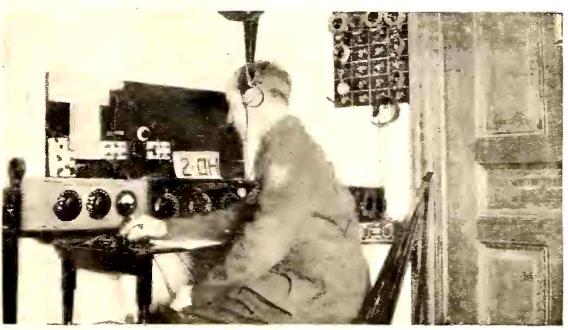
Shown here in 1926 is Lyman F. Barry, 2OH, the Scoutmaster of Troop 503, Manhattan. In an article in the February 1926 issue of Radio Age, he describes the radio scouting activities of that troop and the equipment used. He first notes that nationwide, 75% of all scouts had radio receiving sets, and that radio had played a role in scouting from the very start. “Away back in 1914 when radio broadcasting was little known, thousands of scouts were studying the scout handbook and wiring up crystal receiving sets and learning the code.”
His aim was to have every scout in the troop in radio communication with the troop, in a system totally independent of commercial telephones. The troop headquarters was equipped with a CW transmitter capable of reaching every part of the city, and at least half of the members of the troop already had a receiver. The scouts were currently in the process of revamping those sets to tune down to 176 meters (1705 kHz), the wavelength employed by the troop station.
From 2OH, a daily bulletin was sent out at about 8 words per minute, a speed at which even the new scouts could pick out a few letters. At weekly meetings, the messages were handed in, and points were awarded to scouts copying without mistakes. Scoutmaster Barry noted that if any emergency mobilizations could be communicated via these bulletins.
At least one neighboring troop had installed a transmitter and receiver, and intercommunications with that troop was being carried out.
The troop also had a portable station, consisting of a regenerative receiver with a single WD-12 tube. This station was capable of tuning 50-50,000 meters, and would pull in broadcast stations from 15-20 miles, as well as the troop station.
The troop also regularly monitored time and weather broadcasts from NAA in Arlington, Virginia.
Troop 503 is mentioned again in the June 1928 issue of Boys’ Life, where it reported that it was in direct contact with a troop in Buffalo. At that time, Troop 503 held the call sign 2AAQ for its portable station.
